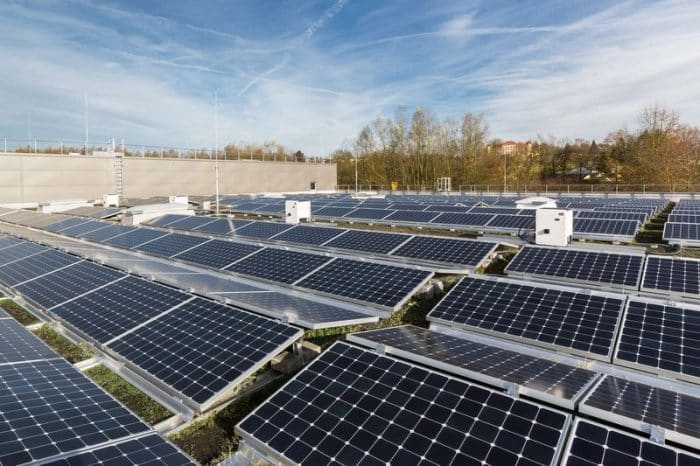By Anthony Laurita, SMA America
As solar technology continues to advance, the commercial and industrial (C&I) sectors stand at the forefront of this transformative movement. The evolution of C&I solar policy, driven by a combination of regulatory support, financial incentives, and technological innovations, has created a strong environment for businesses to adopt and benefit from solar energy.
The demand for commercial and industrial solar projects are growing in the U.S. The Federal Government is allocating billions of dollars for solar, and the C&I and community solar sector continues to grow. The Solar Energy Industries Association (SEIA) anticipates an average growth of eight percent over the next five years, with forecasts projecting this space to double in 2024.
Here are key C&I solar policies and regulatory decisions shaping the future of commercial and industrial solar projects.
Electric infrastructure
One pathway to reach America’s ambitious clean energy goals is through the Federal Energy Regulatory Commission (FERC), which has made important steps to increase renewable energy projects by ensuring America’s power grid is reliable and affordable for customers across the nation.
The federal government, in coordination with utilities and FERC, is also weighing options to update 100,000 miles of transmission lines and reduce the time it takes to get permits for new energy projects — reforms that are crucial if we want to lead the world in energy.
C&I solar tax policy
Today, the predominant support for C&I solar projects comes in the form of tax credits. Solar manufacturers like SMA America and individual customers can take advantage of tax credits offered through the Energy Policy Act and Inflation Reduction Act.
In 2005, Congress passed the federal Section 48 Investment Tax Credit (ITC) under the Energy Policy Act, which has since been a landmark incentive of choice. The ITC provides an upfront 30% tax credit for eligible project costs, including for C&I system projects.
The ITC has boosted the U.S. commercial and residential solar industry by nearly 200x since its implementation nearly 20 years ago. In 2004, Section 45 Production Tax Credit (PTC) expanded to include solar, providing a per-kilowatt-hour (kWh) tax credit for projects that generate electricity from qualified energy resources. In 2009, solar facilities were able to generate PTC for a longer term and since then, this tax credit was expanded and extended through 2022 when the Inflation Reduction Act (IRA) continued the momentum of both the ITC and PTC for renewable energy projects.
Since the Bipartisan Infrastructure Law and the Inflation Reduction Act were passed, the U.S. is on path to lead the world in clean energy investment and climate justice. Regardless of the outcome of the upcoming Presidential Election, the Biden Administration has laid the groundwork for change in infrastructure, manufacturing development and climate innovation.
Solar project grants and rebates
The U.S. Department of Energy (DOE) is targeting a decarbonized U.S. electricity system by 2035 and a decarbonized energy sector by 2050. DOE continues advancing this goal through the allocation of billions in annual grants and rebates. Additionally, the DOE Loan Programs Office (LPO) also actively supports renewable energy projects through loans and loan guarantees, reducing financial risk for C&I solar developers.
The U.S. Environmental Protection Agency (EPA) received $27 billion in funding from the IRA to create the Greenhouse Gas Reduction Fund (GGRF) to finance private capital for greenhouse gases and air pollution-reducing projects across the country. The GGRF can provide support to commercial and industrial projects with its $14 billion National Clean Investment Fund, which will finance renewable energy projects and the $6 billion Clean Communities Investment Accelerator program, which provides funding and technical assistance to low-income communities.
Tariffs and other policy support
Recent U.S. policies, including the IRA, the Bipartisan Infrastructure Law, and trade tariffs (e.g., Sec 201), aim to support the growth and stability of U.S. manufacturing of renewable energy technologies. The IRA and BIL not only provide funding for U.S. manufacturing facilities but also support the procurement of U.S.-made products and components through incentives for renewable energy project developers that use them.
For example, new C&I solar projects can benefit from the use of U.S.-made solar products and components by meeting IRS requirements to receive the Domestic Content Bonus tax credit under Section 45 ITC and Section 48 PTC. The Domestic Content Bonus tax credit can increase the value of PTC and ITC by as much as 10% from the baseline value. SMA is excited to soon offer our customers and partners a U.S.-made inverter to projects secure the Domestic Content Bonus value.
Section 301 tariffs will impact the entire solar industry, with the potential to spur new investments throughout the country. By increasing trade tariffs on products made in China and countries not on the Trade Agreement Act Waiver list, companies will begin manufacturing PV cells in the United States. When a project combines both SMA America inverter products with PV cells and modules, companies can take advantage of the 10% Domestic Content Bonus on top of their chosen tax credit.
By leveraging these opportunities, companies not only reduce their operational costs and carbon footprint, but also play a pivotal role in the broader transition to a sustainable energy future. As policymakers, industry leaders, and stakeholders collaborate to overcome remaining challenges, the potential for solar energy in C&I applications shines brighter than ever, heralding a new era of renewable, efficient, and resilient power solutions.
Anthony Laurita is Government Affairs Manager, SMA America.
Listen to more in-depth conversations on Solar Builder’s YouTube channel

Our most popular series include:
Power Forward! | A collaboration with BayWa r.e. to discuss higher level industry topics.
The Buzz | Where we give our 2 cents per kWh on the residential solar market.
The Pitch | Discussions with solar manufacturers about their new technology and ideas.
Tags: commercial and industrial, SMA America
This post was originally published on 3rd party site mentioned in the title of this site




